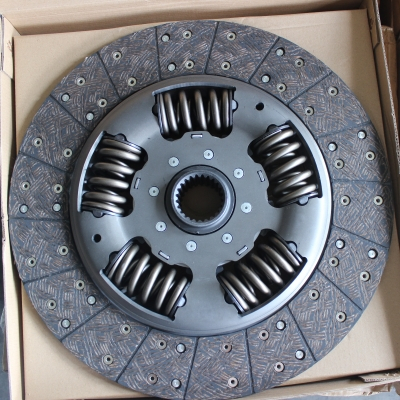Understanding Heavy Duty Clutch Disc
Heavy duty clutch discs play a crucial role in the transmission systems of vehicles,
particularly in heavy-duty applications such as trucks, buses, and high-performance cars.
These components are designed to withstand extreme conditions and deliver consistent performance
under heavy loads. Understanding the characteristics and benefits of heavy duty clutch discs can help
automotive professionals make informed decisions when it comes to maintenance, repairs, or upgrades.

One of the primary functions of a heavy duty clutch disc is to engage and disengage the engine from the transmission,
allowing for smooth gear shifts. Unlike standard clutch discs, heavy duty options are constructed from more robust materials
and often feature additional friction surfaces. This design enhances their ability to handle high torque and heat levels,
which is especially important in heavy-duty applications where performance and reliability are paramount.
When selecting a heavy duty clutch disc, it’s essential to consider the specific requirements of the vehicle and
its intended use. Factors such as the vehicle's weight, engine power, and driving conditions should all influence
the choice of clutch disc. For instance, vehicles that frequently tow heavy loads or are used in off-road environments
may benefit from clutch discs that provide superior heat dissipation and increased durability.

Moreover, the installation process of heavy duty clutch disc requires precision and expertise.
Proper alignment and adjustment are critical to ensure optimal performance and to prevent premature wear.
Automotive professionals should also pay attention to the compatibility of the heavy duty clutch disc with other
components within the transmission system. Using the wrong type of disc can lead to functionality issues and affect overall vehicle performance.
In addition to performance considerations, ongoing maintenance is vital for ensuring the longevity of heavy duty clutch disc.
Regular inspections can help identify wear and tear before it becomes an issue, allowing for timely replacements and
reducing the risk of more significant transmission problems down the line. Automotive professionals should educate
their clients on the signs of clutch issues, such as slipping, strange noises, or difficulty in shifting gears.

In conclusion, heavy duty clutch discs are integral components of transmission systems designed for demanding applications.
By understanding their characteristics and selecting the appropriate disc for specific vehicles, automotive professionals can enhance
performance and reliability, ultimately leading to greater customer satisfaction. Investing in quality heavy duty clutch disc
and adhering to best practices in installation and maintenance will ensure optimal vehicle operation in challenging environments.




